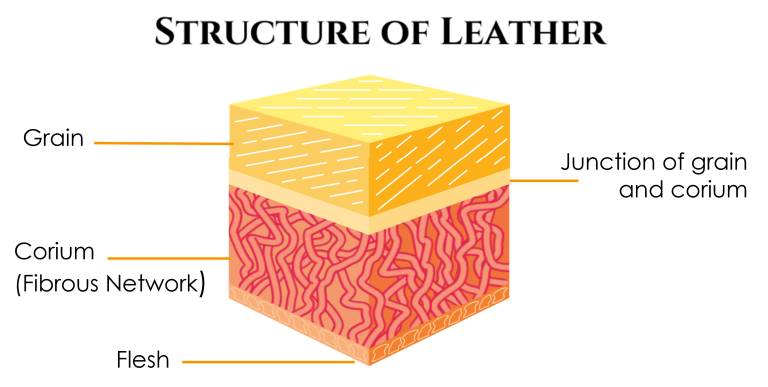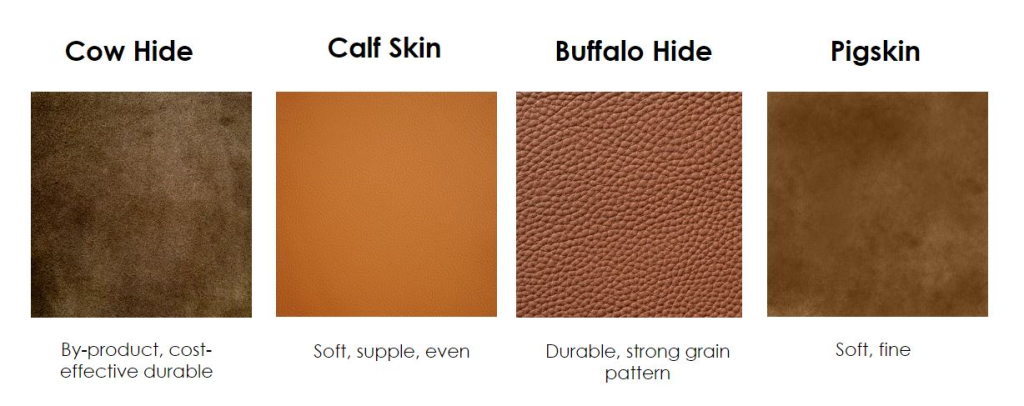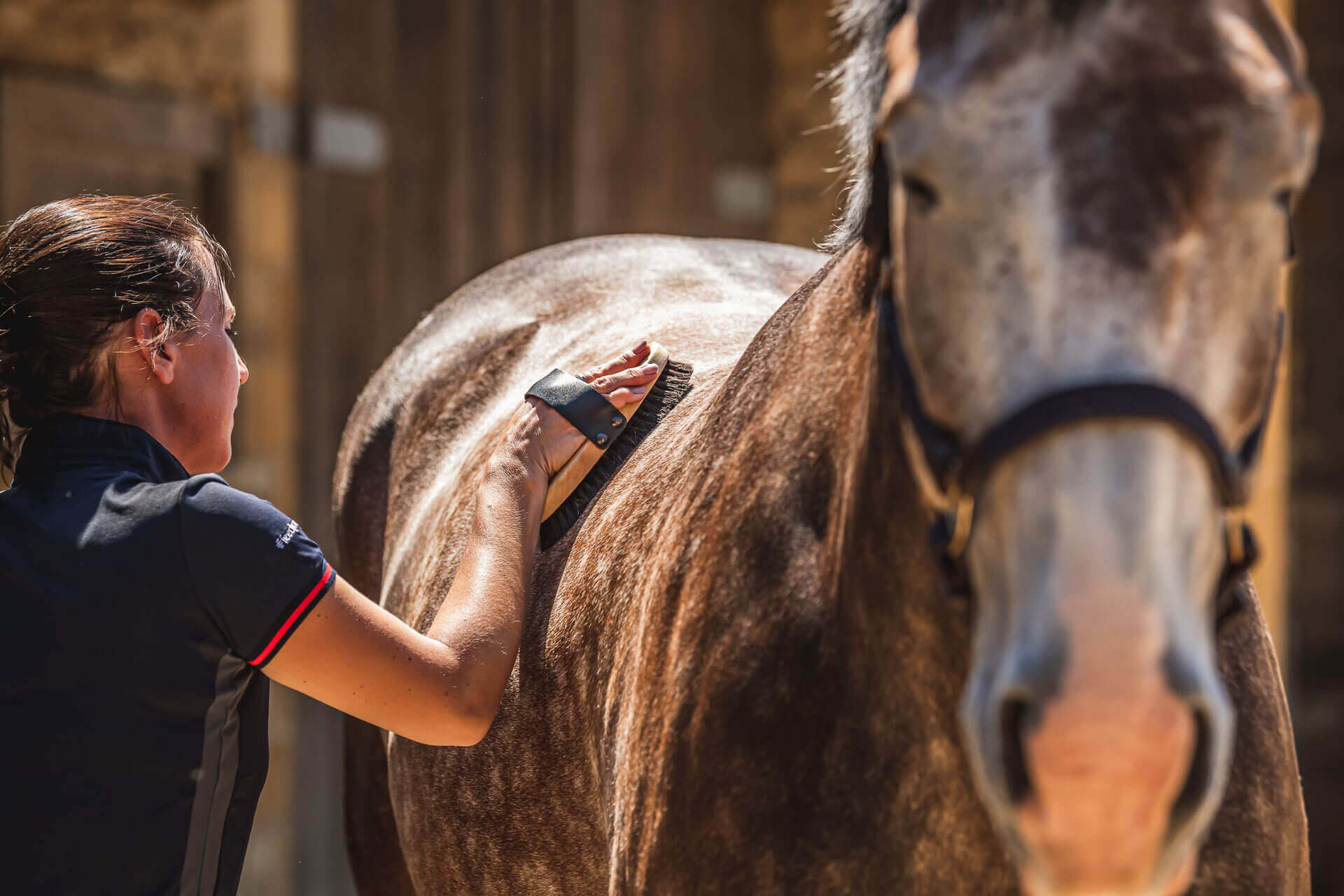The Tanning Process
Due to its unique and resilient properties the majority of riding equipment is made of leather.
Leather is defined as “hide or skin with its original fibrous structure more or less intact, that has been tanned to increase its durability”.
Making leather is a highly skilled and lengthy process which can take up to two weeks to complete.
The GRAIN 1 is the finished, or sealed side of the leather, which is often dyed and embossed to provide an even texture and disguise any flaws.
Below the grain is the CORIUM 2, a mixture of protein and collagen fibres arranged in a ‘spaghetti’ type structure. These fibres give leather its durability, strength and flexibility.
The FLESH 3 side is the underneath and will usually be in contact with the horse. This side is rougher and more absorbent and is more likely to lose moisture, but is also more porous to “accept” conditioners and oils.
Finished leather is composed of approximately 10% fats and oils and around 14% water, which both provide lubrication for the collagen fibres, the balance being protein. Regular care and cleaning maintain this balance and its resilient properties.
Grades of Leather
Leather hides vary in thickness depending on the type, age and sex of the animal. To achieve the thickness required for its ultimate use, the hide is usually cut into two sections or layers and then machined appropriately. Best quality saddles would only utilise the top grain leather.


Sources of Leather
Cow hide : Is a bi-product of the cattle industry. It is readily available, cost effective and renowned for its durability.
Calfskin : Produces soft and supple leather with few imperfections. Most commonly used in Europe.
Buffalo hide : Another durable type of leather. Most commonly sourced in the USA and Asia.
Pig skin: Soft & Fine
Leather Finishes
Full Grain Leather
The grain surface of the leather has not been corrected by buffing, although the creases of the grain pattern will have been supplemented by the addition of several coats of pigment and if required, a deeper grain may be embossed. This produces the durable leather, most commonly used for saddlery.
Corrected Grain Pigmented
Leather: The grain has been buffed and sanded to minimise imperfections and to prepare the surface for pigment coating. An artificial grain may be applied creating a uniform surface. Due to these many layers of pigment coating, the breathability of this leather is reduced and it may have a stiffer feel.
Aniline: A form of finishing that does not use pigments and so produces a very natural looking leather. As grain imperfections cannot be hidden, only the very best quality hides can be used, making such leather more expensive. Due to a minimal protective finish, aniline leather can have less resistance to staining and discolouration, so care should be taken to protect it.
Nubuck/Suede: Nubuck is very fine due to the tight fibre structure in the grain layer, whereas suede has a looser fibre structure with a distinctive rougher nap. Nubuck and suede require specialist cleaning to prevent damage and staining of the nap.
Vegetable Tanned: Uses vegetable extracts in the tanning process to give a natural looking, brown coloured leather. The colour of this leather improves and darkens naturally with age.
Finished Leather Specifically For Saddles & Bridles
Cow hide is most commonly used for tack due to its exceptional durability and strength. Calfskin, pigskin, or suede may also be used on more expensive saddles, especially on areas such as the knee pads and skirt. The top grain cut of the leather is generally used, with a pigmented finish for additional durability and resistance to staining.
English and European leather is preferable as they are renowned for their superior quality. This is due to both the quality of the original hides and the meticulous, traditional manufacturing processes.
Cheaper alternatives also tend to have dyes which are not colourfast, are prone to discolouring and have poor resistance to wear and tear. Often these items may crack and split after very little use.
Find out more about the importance of caring for your tack and protecting your investment

